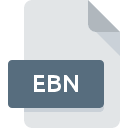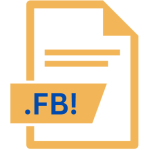.EBN File Extension

Philips Firmware Update File
| Developer | Philips |
| Popularity | |
| Category | Misc Files |
| Format | .EBN |
| Cross Platform | Update Soon |
What is an EBN file?
The .EBN file extension is associated with firmware update files used primarily in Philips electronic devices. Firmware is essential software embedded into hardware to control its functions and operations.
These files play a crucial role in maintaining and enhancing the performance of Philips devices by providing necessary updates and fixes.
More Information.
Philips introduced the .EBN file format as part of their ongoing effort to improve the functionality and reliability of their electronic products.
Initially, the purpose of the .EBN file was to simplify the process of distributing firmware updates. Before the advent of formats like .EBN, firmware updates were often distributed in more cumbersome formats or required specialized hardware tools for installation.
The .EBN format enabled a more user-friendly approach to firmware updates. By providing a standardized format, Philips made it easier for users to apply updates directly from their devices or through a connected computer.
This approach not only improved the user experience but also reduced the risk of errors during the update process.
Origin Of This File.
The .EBN file extension was created by Philips, a renowned electronics company known for its wide range of consumer electronics, including TVs, audio equipment, and home appliances.
Philips developed the .EBN file format to streamline the process of updating firmware in their devices, ensuring users can easily keep their electronics up to date with the latest improvements and fixes.
File Structure Technical Specification.
The .EBN file format is designed to be a container for firmware update data. It typically includes several key components:
- Header Information: Contains metadata about the firmware update, such as version number, release date, and device compatibility information. This section ensures that the correct firmware is applied to the right device.
- Firmware Code: The main body of the .EBN file contains the actual firmware code. This code is responsible for updating the device’s internal software, which may include new features, bug fixes, or performance enhancements.
- Checksum and Verification Data: Ensures the integrity of the firmware update. The checksum helps verify that the file has not been corrupted or altered during download or transfer.
- Metadata: Additional information may be included, such as installation instructions or notes from the manufacturer.
Technically, .EBN files are binary files, meaning they are not human-readable and require specific software or hardware to interpret and apply the update. The structure of the .EBN file is designed to be compatible with Philips’ firmware update tools and processes.
How to Convert the File?
Converting .EBN files is generally not necessary, as they are intended to be used directly with Philips devices.
If a conversion is required, it would typically involve specialized software or tools provided by Philips. These tools can extract or repackage firmware files in a format compatible with different devices or update methods.
Steps for conversion might include:
- Obtain the Required Tool: Philips may provide firmware management tools that can handle .EBN files. Check the Philips website or contact customer support for the appropriate software.
- Use the Tool to Extract or Convert: Follow the tool’s instructions to either extract the firmware from the .EBN file or convert it into a different format if needed.
- Verify the Output: Ensure that the converted file is compatible with the intended use and device.
Advantages And Disadvantages.
Advantages:
- Ease of Use: .EBN files streamline the process of updating firmware, making it more accessible for users. Updates can often be performed directly from the device or through a simple update utility.
- Improved Reliability: The .EBN format includes built-in verification checks, reducing the risk of failed updates due to file corruption.
- Compatibility: Designed specifically for Philips devices, ensuring that updates are compatible with the hardware and software.
- Enhanced Features: Firmware updates can bring new features and improvements to devices, enhancing their performance and functionality.
Disadvantages:
- Device-Specific: .EBN files are specific to Philips devices and cannot be used with devices from other manufacturers. This limits their versatility.
- Technical Knowledge Required: While the process is designed to be user-friendly, understanding how to properly apply firmware updates can still be challenging for some users.
- Potential Risks: If not applied correctly, firmware updates can potentially cause issues with the device. It is crucial to follow the manufacturer’s instructions to avoid problems.
- Lack of Transparency: Users cannot easily inspect the contents of .EBN files, as they are binary and require specific tools for interpretation.
How to Open EBN?
Open In Windows
- .EBN files are typically used with Philips firmware update tools. These tools may be available as part of a device management suite or downloaded from the Philips support website.
- For users looking to open or view the contents of an .EBN file, specialized software from Philips is required. Standard file explorers or general-purpose software will not be able to interpret the binary content.
Open In Linux
- Philips firmware update tools for Linux are less common, but users can search for open-source or community-developed tools that might handle .EBN files.
- As with other operating systems, specialized software is needed to interact with .EBN files.
Open In MAC
- Similar to Windows, .EBN files require Philips-specific tools for interaction. macOS users should check if Philips provides a macOS-compatible tool for managing firmware updates.
- If no macOS tool is available, users may need to use a Windows virtual machine or alternative method to work with the .EBN file.











